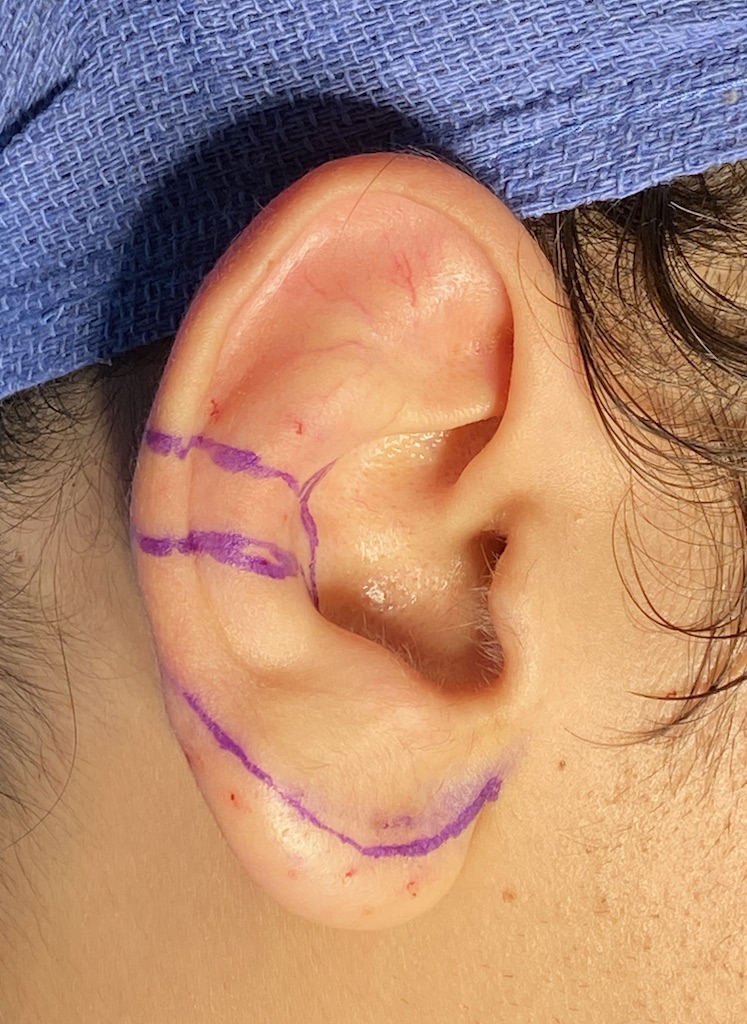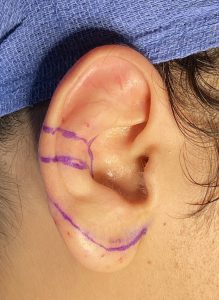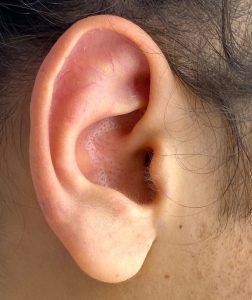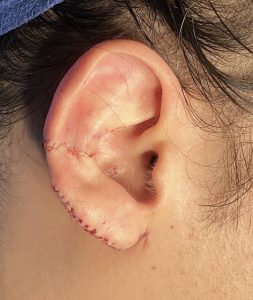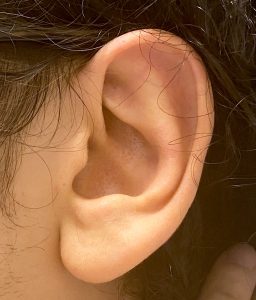Background: Macrotia is an aesthetic ear condition where it appears too big. This usually refers to the height or length of the ear from top to bottom. (Top of the helical rim down to the bottom end of the earlobe) There are well known anthropometric measurements for men and women as to what the ear length should be. On average ear lengths are in the 55 to 65mms range with men being a few more millimeters longer than women. (62mms vs 58mms) While these are not absolute numbers it is fair to say that when an ear is over 65mm it will seem big and when the ear is less than 55ms it can be considered too small. (Although a small ear is far better aesthetically tolerated than a big ear)
The large ear in many patients often is isolated to just one section and means that they have a big and low hanging earlobe. Since the earlobe is the only non-cartilage bearing portion of the ear it is prone to become elongated with aging and ear rings. Thus earlobe reductions are the most frequently performed macrotia reduction…although I would not call that a true macrotia problem or macrotia reduction.
Macrotia really refers to when a structural or cartilage containing portion of the ear is too big. This refers to either the upper or middle third of the ear. A large earlobe is often present as well. Thus a true macrotia reduction always involves a two level reduction, one of the structural levels as well as an earlobe reduction. In most macrotia reductions it is the upper third of the ear that is reduced due to having a large scaphal area for which its excision and helical rim advancement is done to reduce it. The only visible scar in doing so is small horizontal one across the helical rim in the middle of the ear.
While this ‘high and low’ macrotia reduction is effective one must be wary of the patient who has a large concha. In these patients it is really the concha that is the excessive structural issue. If not diagnosed and a high-low macrotia technique is done the ear will be smaller. But it will look disproportionate/odd as the middle portion of the ear (concha) looks even larger as the ear above and below it is now smaller.
Case Study: This patient desired to have their large ears reduced. The ears measured 70mms in length on both sides. Besides the long earlobes they pointed that the large concha was a concern. In addition they wanted a significant reduction as they felt a really small ear was more aesthetically pleasing.
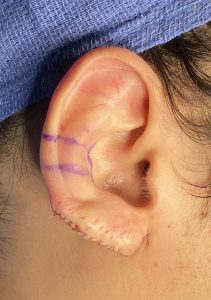
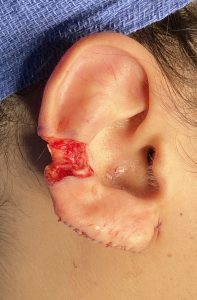
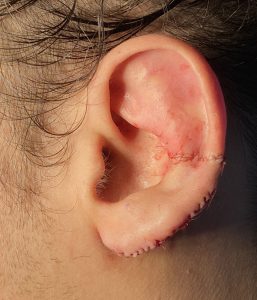
The middle third of the ear reduction seems more aesthetically precarious than the upper scaphal flap technique because it has a longer and potentially more visible scar across the middle of the ear. While such concerns are understandable my experience has been that such a scar location heals very well and only poses the same potential postoperative issue as that of the scaphal flap, helical rim notching, which is both uncommon and easy to correct secondarily. In the large conch macrotia patients that is a far better risk than being left with a smaller ear with a big middle third. (concha)
Case Highlights:
1) Macrotia reduction usually has to involve a two level reduction to get a significant height reduction.
2) In the long ear with a large concha a high and low reduction, while shortening the ear, may make it looks disproportionate.
3) In large concha macrotias a middle ear level resection along with earlobe reduction is necessary to make the ear both smaller and more proportionate.
Dr. Barry Eppley
World-Renowned Plastic Surgeon

